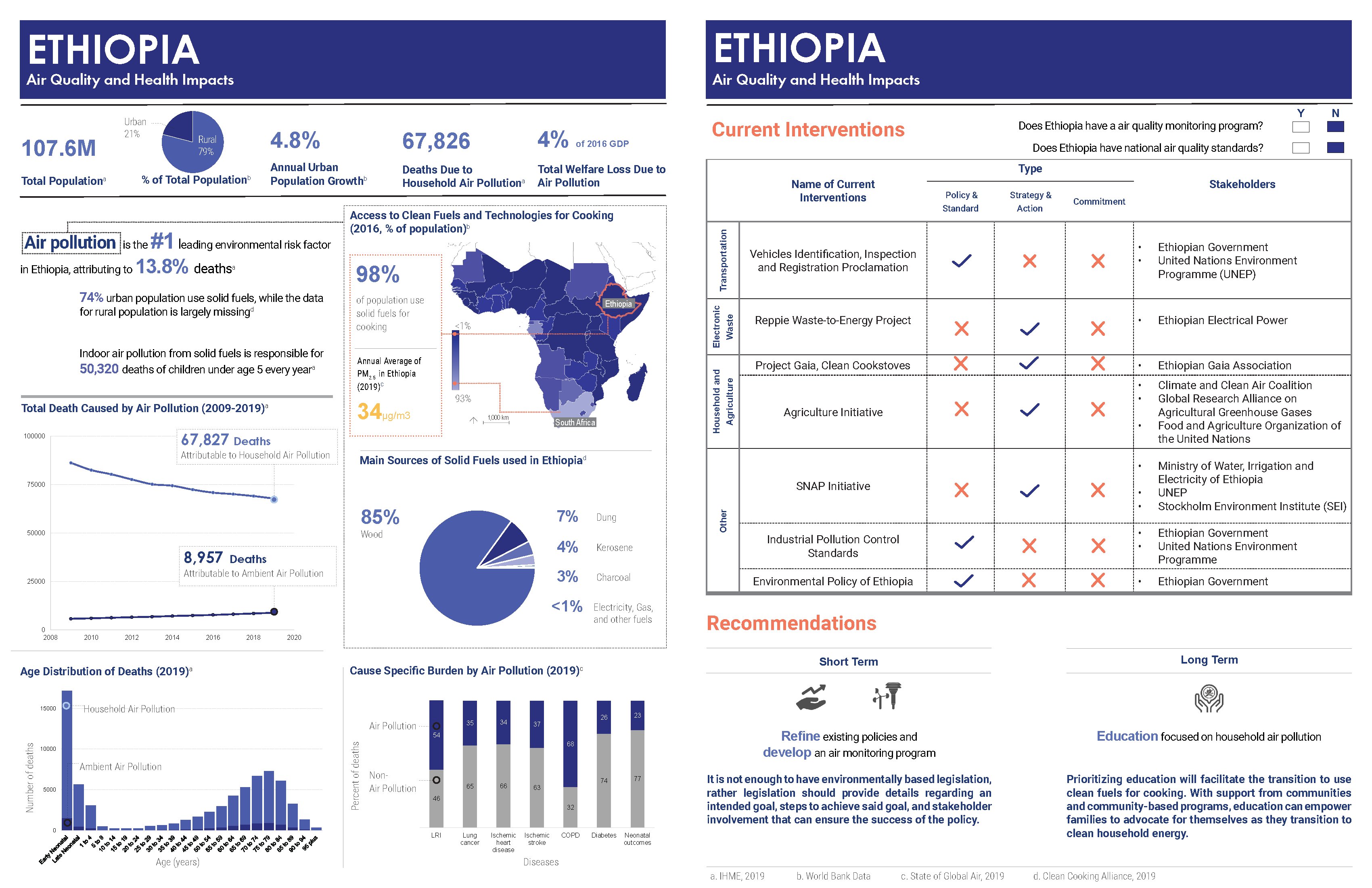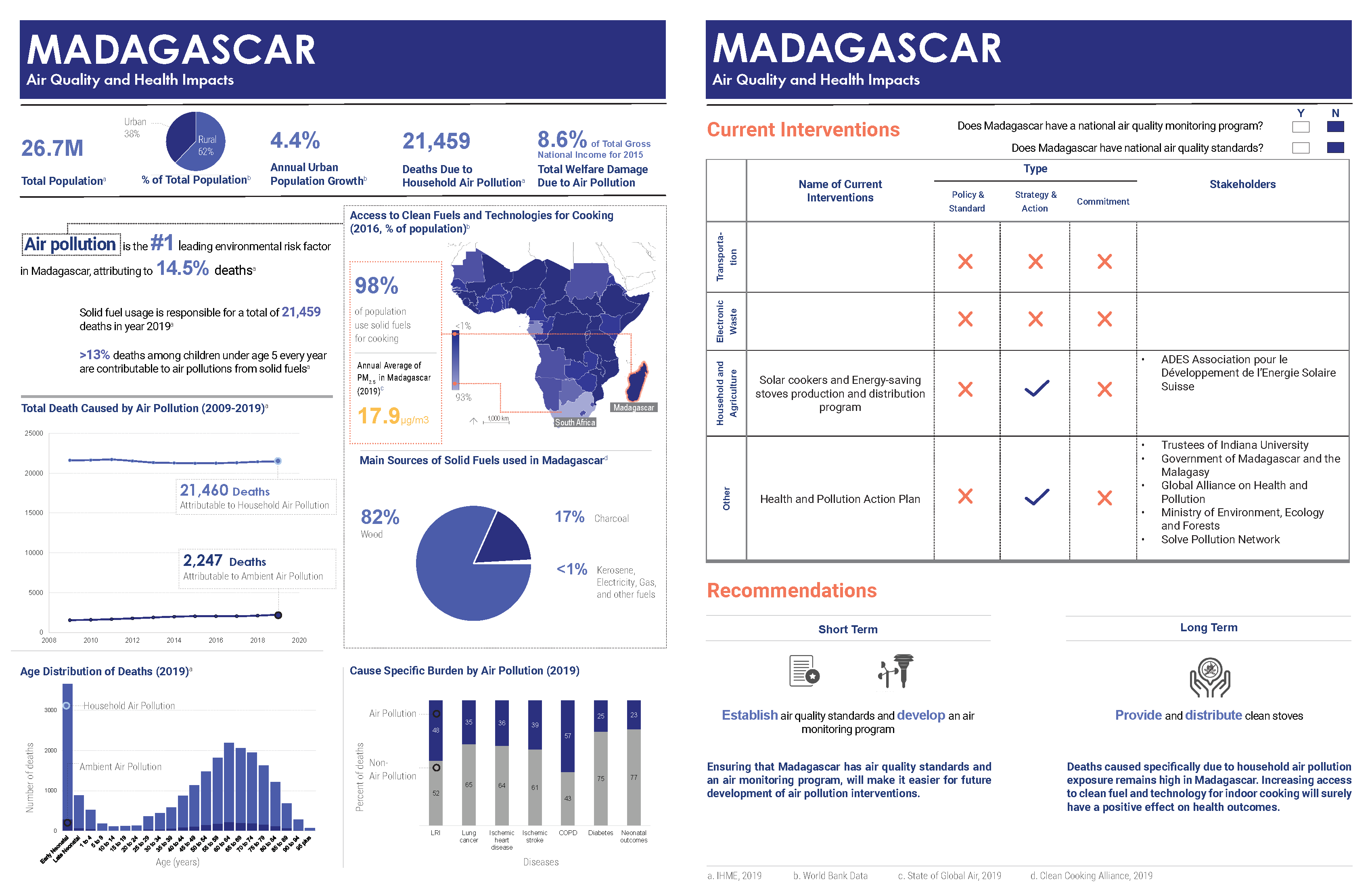04.
Air Pollution in Sub-Saharan African (SSA) Countries
2021, Public Health
With Saoimanu Sope
Tools: QGIS, Tableau, InDesigh
Sub-Saharan Africa (SSA) can be characterized by its rapid population growth, wealth in natural resources, or the many health challenges that the region faces including that of environmental health risks. Among the major causes of death attributable to environmental health risks,the total number of deaths due to air pollution increased by 60 percent betweenthe years 1990 and 2017.In 2019 alone, 400,000 deaths were due to household air pollution and 250,000 deaths were due to ambient air pollution. This reality persists today and for many SSA countries, healthcare infrastructure to support such risksis either lacking, inaccessible, or non-existent.
Achieving these objectives will allow the research team to determine a country’s need for immediate intervention addressing the burden of disease. Accordingly, the framework used and the recommendations made will be considered by the global public health organization, Vital Strategies, to stimulate future projects addressing air pollution in the SSA region.
A Data-Driven Approach
A number of indicators were studied using Tableau.
Health Outcome Indicators:
- Cardiovascular Disease
- Chronic Obstructive Pulmonary Disease (COPD),
-Lower Respiratory Infection.
Operational Feasibility and Contextual Indicators
- External Health Expenditure
- Domestic general government health expenditure per capita in United States (U.S.) dollars ($).
- Population size
- Percent of the population with access to clean energy and technology for cooking
- Internal and external conflict.
Deliverables - Country Profiles
Using the approach discussed above, three countries: Ghana, Ethiopia, and Madagascar were selected. As part of deliverables to Vital Strategies, profiles of these countries were created to provide a snapshot of airquality, health, and air quality management situation at the national level. The profiles are designed communicate with local policymakers, with whom Vital Strategies will engage to direct atention to air quality management.


